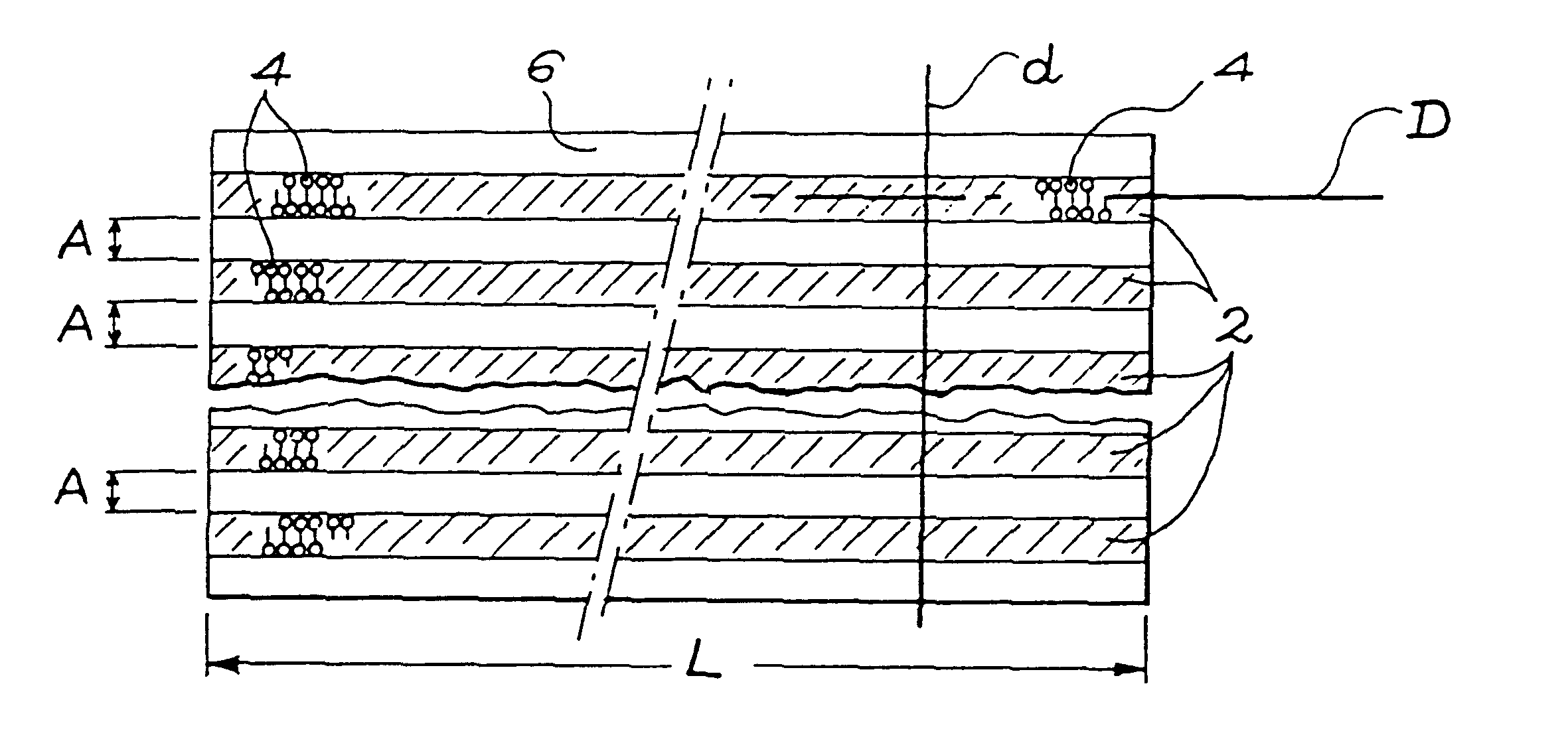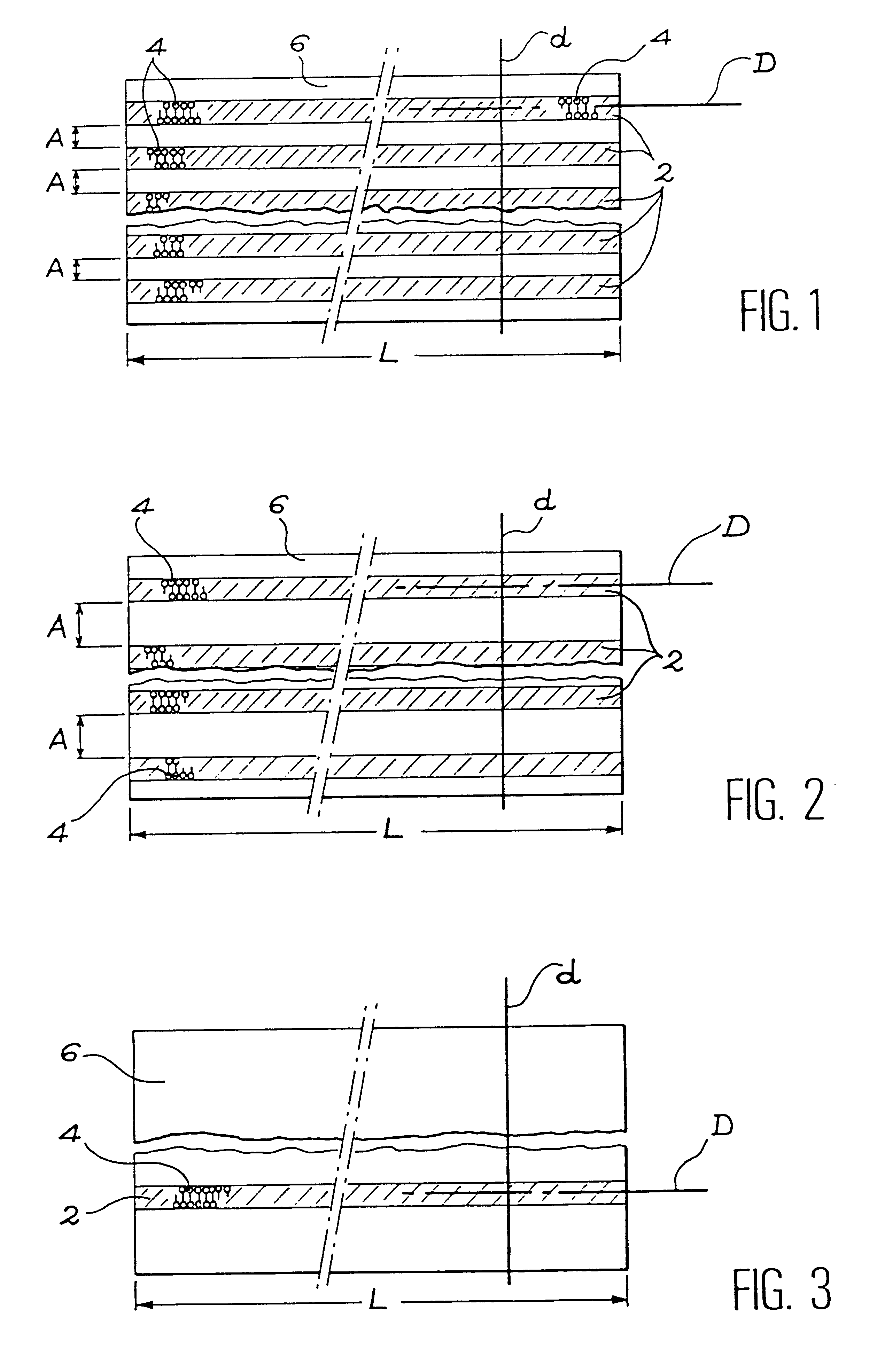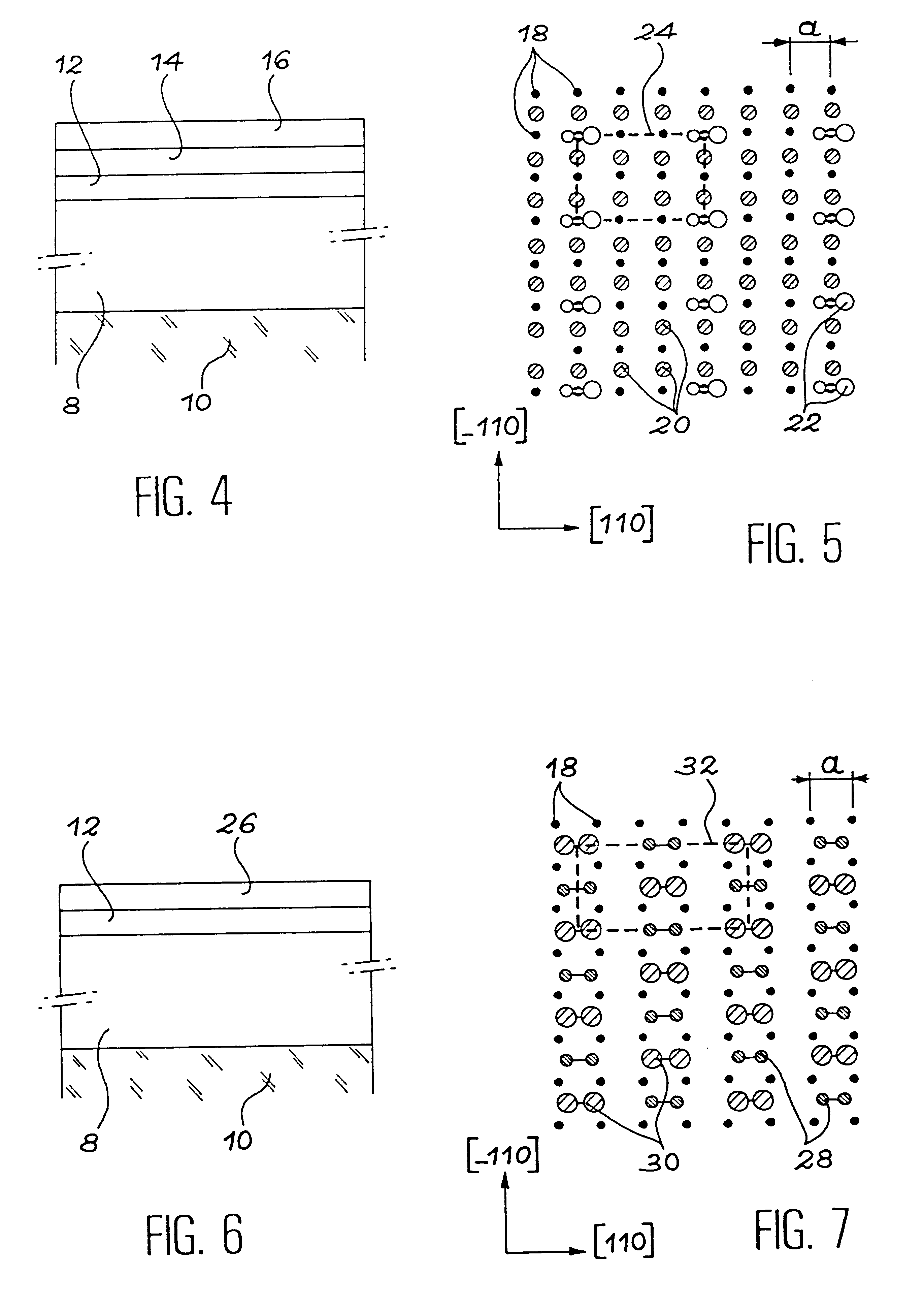Very long and highly stable atomic wires, method for making these wires, application in nano-electronics
a technology of atomic wires and wires, applied in the field of manufacturing atomic wires, can solve the problems of thermal instability of the wire obtained, the length of the atomic wire is generally limited to a few tenths of a nanometer, and the method has drawbacks
- Summary
- Abstract
- Description
- Claims
- Application Information
AI Technical Summary
Benefits of technology
Problems solved by technology
Method used
Image
Examples
Embodiment Construction
The invention therefore concerns atomic lines or wires of great length, formed on the surface of a silicon carbide substrate.
It is possible to vary the distances between the atomic wires in a controlled fashion, from 1 nm to several millimetres.
This is illustrated schematically in plan view by FIGS. 1 to 3.
In FIGS. 1 and 2, atomic wires 2 can be seen, which are chains of silicon dimers (Si--Si ) referenced 4, are very straight and all have the same direction D.
Their length L is very great (greater than 100 nm) and is limited only by the length of the substrate 6 on which these wires 2 are formed.
These wires are regularly spaced apart from each other.
They extend perpendicularly from the direction d of the dimers.
It is possible to vary the number N of atomic wires with the temperature in order to change from a super-lattice of atomic wires, which are separated from each other by a distance of around a few tenths of a nanometer (FIG. 1), to an assembly of atomic wires which are separat...
PUM
| Property | Measurement | Unit |
|---|---|---|
| Thickness | aaaaa | aaaaa |
| Thickness | aaaaa | aaaaa |
| Angle | aaaaa | aaaaa |
Abstract
Description
Claims
Application Information
 Login to View More
Login to View More - R&D
- Intellectual Property
- Life Sciences
- Materials
- Tech Scout
- Unparalleled Data Quality
- Higher Quality Content
- 60% Fewer Hallucinations
Browse by: Latest US Patents, China's latest patents, Technical Efficacy Thesaurus, Application Domain, Technology Topic, Popular Technical Reports.
© 2025 PatSnap. All rights reserved.Legal|Privacy policy|Modern Slavery Act Transparency Statement|Sitemap|About US| Contact US: help@patsnap.com



